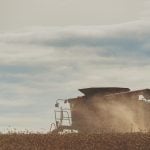
Pasture
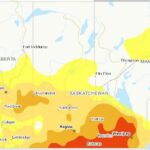
‘Extreme drought’ expands in Prairies
Southern Manitoba, southeastern Saskatchewan parched
MarketsFarm — The newly released map from Agriculture and Agri-Food Canada’s Canadian Drought Monitor (CDM) shows the Prairies’ ongoing drought getting worse. According to AAFC’s nationwide map released on Friday, southwestern Manitoba, parts of southern Saskatchewan and the southeast corner of Alberta are under CDM’s classification of Extreme (D3) drought as of April 30. Communities […] Read more
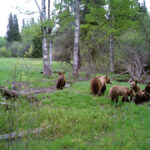
Ranchers concerned about grizzly bear encounters in B.C.
News Roundup, from the May 2021 issue of Canadian Cattlemen
B.C. producers are seeing evidence of more grizzly bears, and with that comes growing concerns about the safety of ranching families and their livestock. George Olin, who ranches in the Vanderhoof, B.C. area, lost several cattle, including a Simmental bull, to grizzlies last fall, Cam Hill writes in the spring issue of Beef in B.C. […] Read more

Vet Advice: Not all that’s green is edible
Plant poisoning is a common problem throughout North America, causing significant losses from sudden death, reproductive failure, poor growth rates, tainting of animal products (milk, meat) and physical damage. Recognizing toxic plants and understanding the effects of toxins on animals is an important aspect of good range management. Plant poisoning can be largely avoided. Plants […] Read more
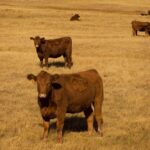
Klassen: Cattle producers facing drought-like conditions
Alberta packers were buying fed cattle on a dressed basis in the range of $262-$265 delivered this past week. Using a 60 per cent grading, the live price would be in the range of $157-$159. If a feedlot booked the bulk of its feed grains earlier in winter, feeding margins are now hovering in positive […] Read more

The struggle to restore native prairie
Though grassland reclamation can take decades and has many challenges, efforts are underway to renew native prairie ecosystems
On the Northern Great Plains, it’s estimated that one acre of native grass is lost every minute. Though recently there has been increased awareness about this ecosystem being the world’s most endangered, pressures to convert this irreplaceable landscape remain strong. “Unfortunately, there’s always this push and pull between different land uses and intensification of agriculture […] Read more

Ideas for advanced grazing management
Once you’ve established the foundation of grazing management, you’re ready to fine-tune the system
The idea of moving cattle to graze higher-quality forages goes back hundreds of years. Long before barbed wire and electric fences, shepherds would move their flocks every day to new areas to graze. Similarly, on the North American prairie, the vast herds of buffalo were continually on the move in search of better grazing. The […] Read more

It ain’t pretty
From the Ground Up with Steve Kenyon
You may have heard me say this before. A monoculture is ugly, no matter how pretty it looks. This constant drive to manage monoculture cropping has us in a downward spiral of dead soils and added inputs. It is costing us dearly. Nature rarely relies on only one species in an environment. Even a hay […] Read more

Grazing binary forage mixtures during the summer slump
A University of Saskatchewan study evaluates new grass and legume varieties at two different soil zones in the province
Grazing grass and legume mixtures in late summer and fall has the potential for promising gains, research conducted in south and central Saskatchewan shows. There are proven benefits to including a legume in a mixture to improve grass pastures. But researchers at the University of Saskatchewan’s Livestock and Forage Centre of Excellence (LFCE) saw an […] Read more
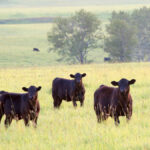
Getting the most out of your grass cattle
Nutrition with John McKinnon
As this issue comes to print, we are likely 40 to 60 days away from turning yearlings out to grass. The vast majority of these animals are last year’s calves weaned in the fall or early winter. If we examine how these animals are overwintered, two different management approaches are evident. The first is to […] Read more

A wider vision for grassland conservation
A new collaborative effort across North America is focusing efforts to protect the fast-disappearing Prairie ecosystem
For many who call the Canadian Prairies home, it would be impossible to imagine springtime without the cheerful song of the western meadowlark. That distinct, flute-like call, along with the other songs of grassland birds returning north, is a defining part of this landscape. But as grasslands across North America continue to disappear, the meadowlark’s […] Read more

